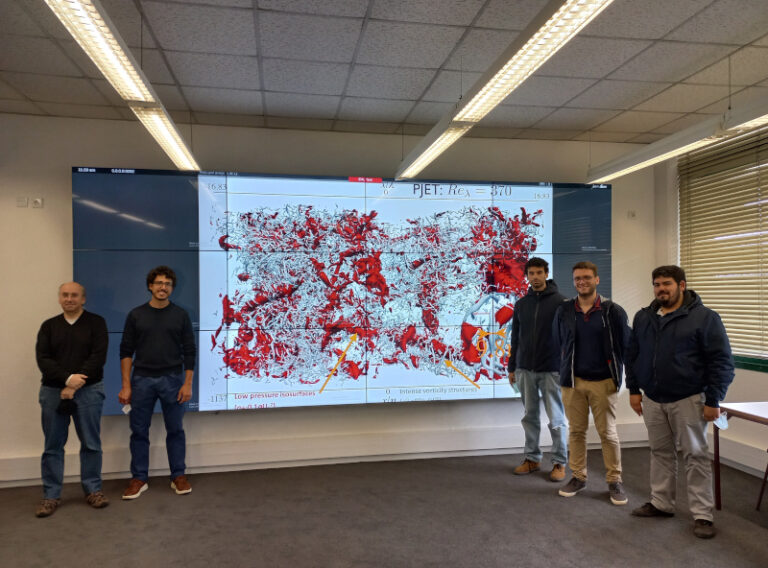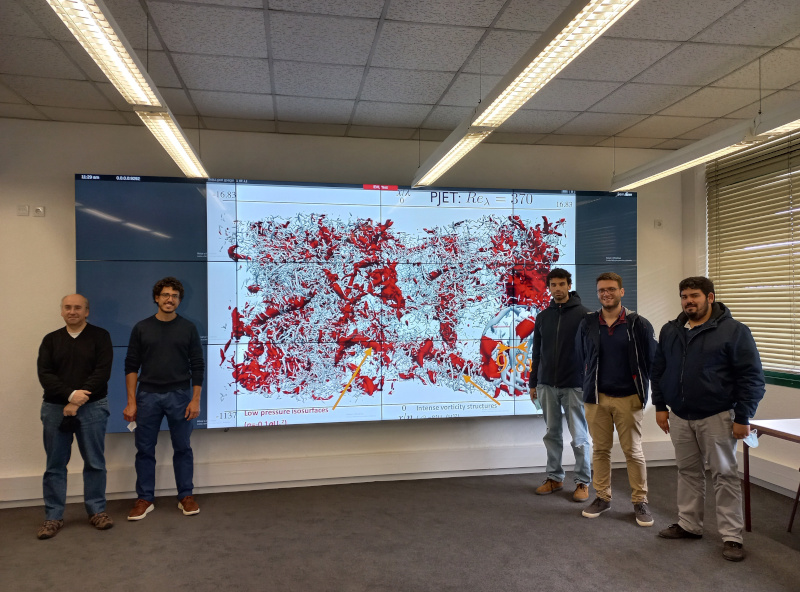The visualization infrastructure recently inaugurated at Instituto Superior Técnico (IST) has been very important to support the research work conducted at IST/IDMEC in the physics of turbulence.
Turbulent motion is naturally present in fluids (and plasmas) and governs many crucial mechanisms in engineering and natural flows. The drag force exerted in a train, the transport and growth of water droplets inside clouds, and the respiratory flow inside living organisms are only some of the numerous examples of flows where turbulence is the leading mechanism at work.
Led by Prof. Carlos Bettencourt da Silva from the Department of Mechanical Engineering of IST, a team of PhD students has been carrying out and analysing massive data banks resulting from several high-fidelity simulations performed with highly accurate in-house computer codes.
The simulations have been performed at several high-performance computing centres from the European computing infrastructure, such as the Marenostrum IV, allowing access to multiscale complexity of turbulence fields, requiring appropriate algorithms and software tools to extract many complex quantities.
In this context, the new visualization infrastructure from IST has enabled the scientists to access all this complexity by allowing a detailed visualization of several important flow quantities, otherwise inaccessible to the eye.
The pictures show such an example, displaying iso-surfaces of the instantaneous fields of low pressure (red) and high vorticity (grey) in a small sub-region from the largest existing simulation of a temporally evolving turbulent jet.

